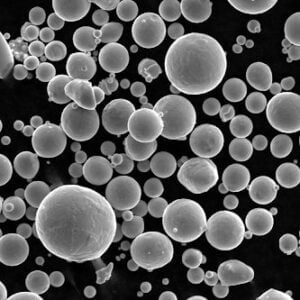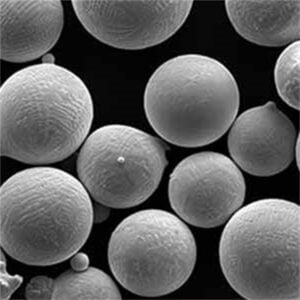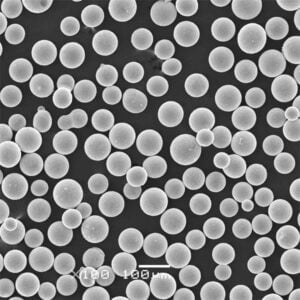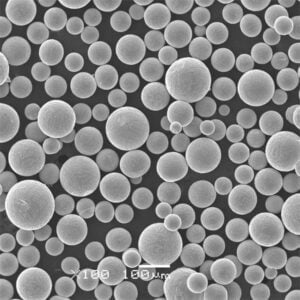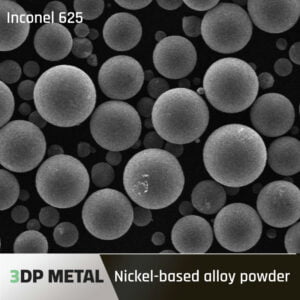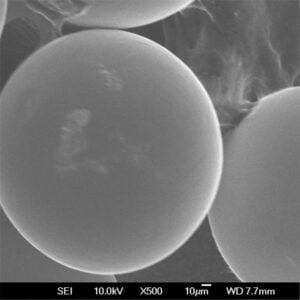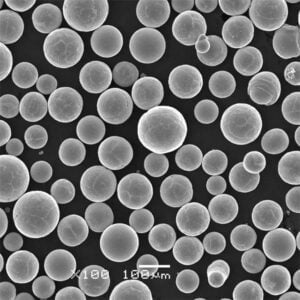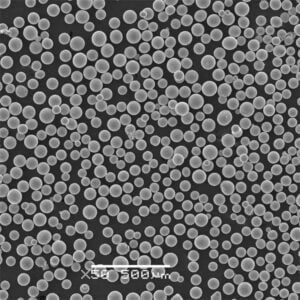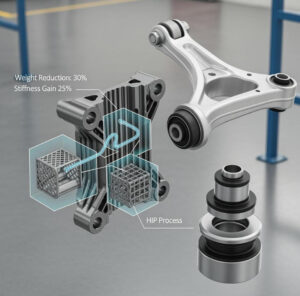3D-utskrift av metallpulver: Råmaterial för mekanisk legering
Innehållsförteckning
Föreställ dig en värld där komplexa metalldelar materialiseras från en digital ritning, lager för lager, med invecklade detaljer och exceptionell styrka. Denna futuristiska vision håller på att bli verklighet tack vare 3D-printingens magi. Men precis som med alla mästerverk måste ett framgångsrikt 3D-utskrift av metallpulver objekt börjar med rätt grund - råmaterialen. I den här artikeln fördjupar vi oss i den fascinerande världen av mekanisk legering, en teknik som används för att skapa den perfekta blandningen av ingredienser för anmärkningsvärda 3D-utskriftsresultat.
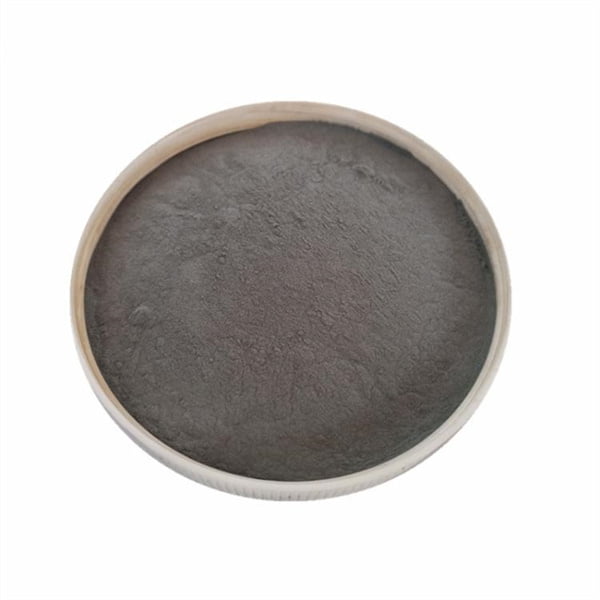
Val av råmaterial för mekanisk legering
Precis som en kock noggrant väljer sina ingredienser för en gourmetmåltid är det avgörande att välja rätt råvaror för framgångsrik mekanisk legering i 3D-utskrift av metallpulver. Här’s en uppdelning av de viktigaste aktörerna:
1. Metallpulver: Dessa är stjärnorna i showen och utgör basmaterialet för det slutliga tryckta objektet. De måste ha specifika egenskaper:
- Partikelstorlek och fördelning: Föreställ dig en slät strand jämfört med en stenig terräng - det är skillnaden mellan önskad och oönskad partikelstorleksfördelning. Helst ska partiklarna vara fin och jämnt storleksanpassad för att säkerställa ett jämnt flöde och exakt skiktning under tryckningen.
- Partikelmorfologi: Tänk dig släta, sfäriska bollar jämfört med ojämna, oregelbundna former. Sfäriska partiklar ger bättre flytbarhet, packningstäthet och i slutändan överlägsen tryckkvalitet jämfört med sina oregelbundet formade motsvarigheter.
- Kemisk sammansättning: Renhet är viktigt! De metallpulver som används vid mekanisk legering ska vara av hög renhet för att undvika att införa oönskade element som kan äventyra den slutliga produktens egenskaper.
2. Tillsatser: Dessa är de stödjande aktörerna som spelar en avgörande roll för att förbättra metallpulvrets prestanda
- Pärmar: Tänk dig lim som håller ihop sanden i ett sandslott. Bindmedel fungerar på samma sätt, förbättra flytbarhet och packningstäthet av metallpulvret under tryckprocessen. När tryckningen är klar avlägsnas bindemedlen vanligtvis genom en efterföljande värmebehandling.
- Porositetsreglerande medel: Tänk på små luftfickor i bröddeg. Porositetskontrollmedel hjälper till att minimera bildandet av porer i det tryckta objektet, vilket leder till tätare och i slutändan starkare delar.
- Smörjmedel: Friktion kan vara en riktig bromskloss, även i metallpulvrets mikroskopiska värld. Smörjmedel hjälper till minska friktionen mellan partiklarna, vilket ger ett jämnt och effektivt pulverflöde under tryckningen.
3. Legeringselement: Det här är de hemliga ingredienserna som används för att ändra egenskaperna av det slutliga materialet. Genom att noggrant välja ut och lägga till specifika element kan tillverkarna skräddarsy det tryckta objektets egenskaper, t.ex:
- Styrka och hårdhet: Tänk dig en ömtålig tekopp jämfört med en robust järnstekpanna. Tillsats av specifika legeringselement kan avsevärt öka styrkan och hårdheten av den tryckta metallen.
- Motståndskraft mot korrosion: Tänk på en rostig bil jämfört med en skinande kromad stötfångare. Vissa legeringselement kan avsevärt förbättra materialets motståndskraft mot korrosionvilket gör den lämplig för tuffa miljöer.
- Elektrisk konduktivitet: Föreställ dig skillnaden mellan en träsked och en koppartråd. Genom att noggrant välja legeringselement kan tillverkarna kontrollera elektrisk ledningsförmåga av det tryckta objektet, vilket gör det lämpligt för olika elektroniska tillämpningar.
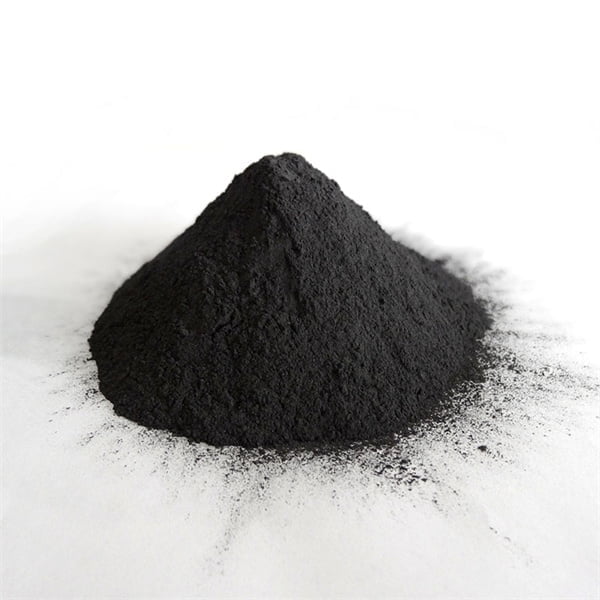
Här är 10 specifika exempel på metallpulver som vanligen används vid mekanisk legering för 3D-utskrift av metallpulver, tillsammans med deras viktigaste egenskaper:
| Metallpulvermodell | Sammansättning | Viktiga egenskaper | Tillämpningar |
|---|---|---|---|
| 316L rostfritt stål | Fe-18Cr-10Ni-2Mo | Hög korrosionsbeständighet, goda mekaniska egenskaper | Flyg- och rymdindustrin, medicinska implantat, kemisk processutrustning |
| Inconel 625 | Ni-20Cr-9Mo-4Fe | Utmärkt värme- och korrosionsbeständighet, god hållfasthet vid höga temperaturer | Turbinblad, raketmotorkomponenter, värmeväxlare |
| Ti-6Al-4V | Ti-6Al-4V | Högt förhållande mellan styrka och vikt, god biokompatibilitet | Flyg- och rymdkomponenter, medicinska implantat, sportartiklar |
| Aluminium 6061 | Al-Mg-Si | Lättvikt, god bearbetbarhet, god korrosionsbeständighet | Bildelar, elektronikkapslingar, konsumentvaror |
| Koppar | Cu | Utmärkt elektrisk ledningsförmåga, god värmeledningsförmåga | Kylflänsar, elektriska ledare, kretskort |
| Nickel | Ni | God korrosionsbeständighet, god duktilitet | Elektriska komponenter, katalysatorer, utrustning för kemisk bearbetning |
| Kobolt-krom (CoCr) | Co-Cr | Hög slitstyrka, biokompatibel | Medicinska implantat, tandproteser, slitstarka komponenter |
| Hastelloy C-276 | Ni-Mo-Cr-W | Utmärkt korrosionsbeständighet, hållfasthet vid höga temperaturer | Utrustning för kemisk bearbetning, komponenter för olje- och gasindustrin, utrustning för föroreningsbekämpning |
| Volfram | W | Hög smältpunkt, hög densitet, god slitstyrka | Pansarbrytande ammunition, skärverktyg, munstycken till raketmotorer |
| Maråldrat stål | Fe-Ni-Mo-Cr | Hög hållfasthet, god duktilitet, god seghet | Komponenter till flyg- och rymdindustrin, skjutvapen, golfklubbor |
Val av råmaterial
Kvaliteten och urvalet av råmaterial spelar en avgörande roll för att bestämma framgången för den mekaniska legeringsprocessen och det slutliga 3D-utskriftsmetallpulverobjektet. Här’s hur:
- Partikelstorlek och morfologi har en direkt inverkan på flytbarhet och packningstäthet. Dålig flytbarhet kan leda till inkonsekvenser i de tryckta lagren, vilket äventyrar måttnoggrannheten och ytkvaliteten hos det slutliga objektet.
- Den kemiska sammansättningen av metallpulvret och eventuella tillsatta element påverkar de slutliga egenskaperna. Exempelvis kan förekomsten av föroreningar försvaga materialet, medan specifika legeringselement kan förbättra dess styrka, korrosionsbeständighet eller andra önskade egenskaper.
- Valet av bindemedel och smörjmedel påverkar tryckbarheten och den slutliga ytfinishen. Fel bindemedel kan leda till delaminering (separation av skikt) eller svårigheter att avlägsna bindemedlet efter tryckning. På samma sätt kan otillräcklig smörjning orsaka friktionsproblem, vilket hindrar ett jämnt pulverflöde och potentiellt kan skada tryckutrustningen.
I grund och botten är det den rätta kombinationen av råmaterial som utgör grunden för en lyckad 3D-utskriftsupplevelse. Genom att noggrant välja ut och optimera varje komponent kan tillverkarna utnyttja den fulla potentialen hos mekanisk legering och skapa funktionella metalldelar av hög kvalitet.
Jämförelse av olika råvarualternativ och deras fördelar och begränsningar
Att välja rätt råmaterial för mekanisk legering innebär att man noggrant väger fördelar och begränsningar för varje alternativ:
Metallpulver:
- Fördelar: Många olika material tillgängliga, vilket möjliggör olika tillämpningar; Kan kontrolleras exakt för specifika egenskaper.
- Begränsningar: Kostnaden kan vara högre jämfört med andra tillverkningsmetoder; pulverhantering kan vara utmanande och kräver noggrann kontroll för att undvika kontaminering.
Tillsatser:
- Fördelar: Förbättrar tryckbarheten och kvaliteten på slutprodukten; Kan skräddarsys för specifika tillämpningar.
- Begränsningar: Kan göra processen mer komplicerad; kan införa oönskade element som måste tas bort senare.
Legeringselement:
- Fördelar: Möjliggör exakt kontroll av de slutliga materialegenskaperna; Kan skapa unika kombinationer som inte går att uppnå med traditionella tillverkningsmetoder.
- Begränsningar: Kan avsevärt öka kostnaden och komplexiteten i processen; Kan kräva specialiserad expertis och utrustning för att hantera.
framtiden för råvaror för mekanisk legering 3D-utskrift av metallpulver
Framtiden för mekanisk legering vid 3D-utskrift av metallpulver är full av spännande möjligheter. Här är några viktiga trender att hålla ögonen på:
- Utveckling av nya och förbättrade metallpulver: Forskare strävar ständigt efter att skapa metallpulver med snävare storleksfördelning, förbättrad morfologi och ännu finare partikelstorlekar för ännu större detaljrikedom och upplösning i tryckta delar.
- Utforskning av nya legeringselement: Införandet av nya grundämnen och utforskandet av deras kombinationer innebär en enorm potential för att skapa material med unika egenskaper som flyttar fram gränserna för vad som är möjligt att uppnå med traditionella tillverkningsmetoder.
- Hållbara och miljövänliga material: I takt med att hållbarhetsfrågorna blir allt viktigare ökar utvecklingen av miljövänliga metallpulver och biologiskt nedbrytbara bindemedel, vilket banar väg för en mer ansvarsfull och hållbar framtid för 3D-printing.
Valet av råmaterial spelar en avgörande roll för hur framgångsrik 3D-utskrift med mekanisk legering blir. Genom att förstå de olika alternativen, deras egenskaper och deras inverkan på slutprodukten kan tillverkarna frigöra den fulla potentialen hos denna revolutionerande teknik och skapa högkvalitativa, funktionella metalldelar för olika tillämpningar.
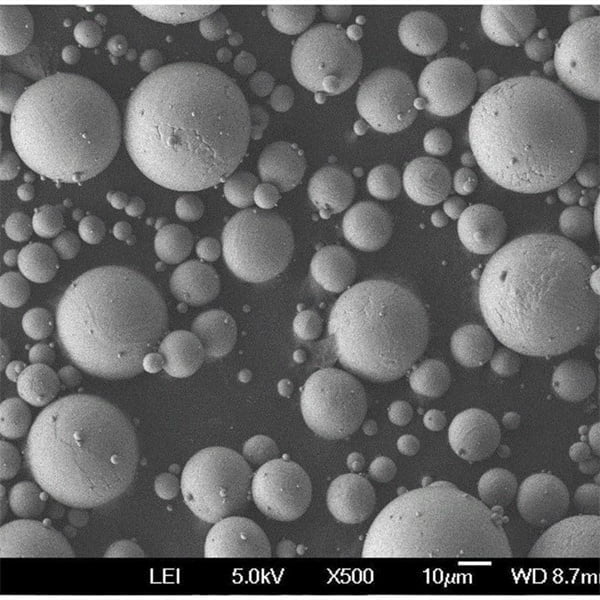
VANLIGA FRÅGOR
Q: Vilka är fördelarna med att använda mekanisk legering för 3D-utskrift av metallpulver?
A: Mekanisk legering erbjuder flera fördelar, bland annat:
- Möjligheten att skapa unika och skräddarsydda materialegenskaper: Genom att noggrant välja ut och kombinera olika metallpulver och legeringselement kan tillverkarna skapa material med specifika egenskaper som inte kan uppnås med traditionella tillverkningsmetoder.
- Förbättrad pulverkvalitet och tryckbarhet: Mekanisk legering kan hjälpa till att förfina pulverpartiklarna, vilket leder till förbättrad flytbarhet, packningstäthet och i slutändan bättre utskriftskvalitet.
Q: Vilka är några av utmaningarna med att använda mekanisk legering för 3D-printing av metallpulver?
S: Mekanisk legering ger betydande fördelar, men innebär också vissa utmaningar:
- Processens komplexitet: Jämfört med traditionella pulverproduktionsmetoder kan mekanisk legering vara en mer komplex och tidskrävande process som kräver specialutrustning och expertis.
- Överväganden om kostnader: Kostnaden för råmaterial, i synnerhet metallpulver med hög renhet och specifika legeringselement, kan vara högre jämfört med andra 3D-utskriftstekniker.
- Kvalitetskontroll: För att upprätthålla en jämn pulverkvalitet och säkerställa minimal kontaminering under hela processen krävs rigorösa kontrollåtgärder.
F: Vilka är de typiska tillämpningarna för 3D-utskrift med mekanisk legering?
A: Mekanisk legering 3D-utskrift används i olika branscher tack vare dess förmåga att skapa högpresterande metalldelar med unika egenskaper. Här är några exempel:
- Aerospace: Tillverkning av lättvikts- och höghållfasta komponenter för flygplan, satelliter och rymdfarkoster.
- Medicinska implantat: Skapar skräddarsydda implantat med biokompatibla material för knän, höfter och andra kroppsdelar.
- Fordon: Utveckling av specialdesignade delar till motorer, växellådor och andra fordonskomponenter.
- Elektronik: Tillverkning av komplicerade komponenter till kylflänsar, elektriska kontakter och kretskort.
- Verktyg och maskiner: Skapar slitstarka verktyg med hög precision för olika industriella tillämpningar.
F: Hur ser framtiden ut för 3D-utskrifter med mekanisk legering?
Framtiden för 3D-utskrifter med mekanisk legering är lovande, med flera spännande utvecklingar på horisonten:
- Framsteg inom automatisering: Ökad automatisering kan effektivisera processen, minska kostnaderna och förbättra jämnheten i pulverproduktionen.
- Fokus på hållbarhet: Utvecklingen av miljövänliga material och processer kommer att vara avgörande för en mer hållbar framtid för 3D-printing.
- Nya tillämpningar: I takt med att tekniken mognar och kostnaderna sjunker kan vi förvänta oss att 3D-utskrifter med mekanisk legering kommer att användas på nya och innovativa sätt inom olika branscher.
Sammanfattningsvis spelar valet av råmaterial en avgörande roll för framgången med 3D-utskrift med mekanisk legering. Genom att förstå de olika alternativen, deras egenskaper och deras inverkan på slutprodukten kan tillverkarna frigöra den enorma potentialen i denna teknik och bidra till dess fortsatta utveckling och mångsidiga tillämpningar under de kommande åren.
Dela på
MET3DP Technology Co, LTD är en ledande leverantör av lösningar för additiv tillverkning med huvudkontor i Qingdao, Kina. Vårt företag är specialiserat på 3D-utskriftsutrustning och högpresterande metallpulver för industriella tillämpningar.
Förfrågan för att få bästa pris och anpassad lösning för ditt företag!
Relaterade artiklar
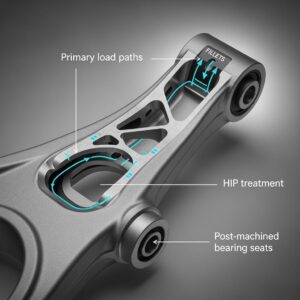
Metal 3D Printing for U.S. Automotive Lightweight Structural Brackets and Suspension Components
Läs mer "Om Met3DP
Senaste uppdateringen
Vår produkt
KONTAKTA OSS
Har du några frågor? Skicka oss meddelande nu! Vi kommer att betjäna din begäran med ett helt team efter att ha fått ditt meddelande.







